All organisms, whether dead or alive, are potential food sources for others. This often happens under suitable living conditions in the ecosystem. However, certain incidental and uncommon conditions, such as climate change, may occur unexpectedly. During such times, animals adopt different mechanisms to ensure their survival. They embrace the ageless law of nature, “survival of the fittest,” and adapt to changing conditions.
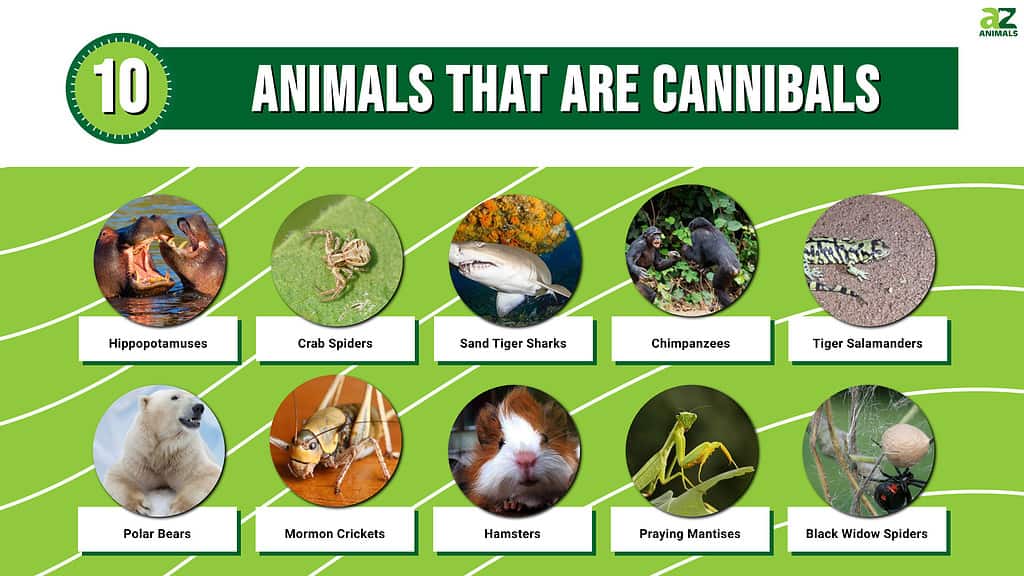
Cannibalism is not an evil aberration but a result of the natural struggle for survival. In times of famine, most animals take desperate measures to stay alive, including eating members of their own species. This behavior is known as cannibalism, a common ecological interaction across the entire animal kingdom.
Both predator and prey belong to the same species in cannibalism. Below are some animals that are known to have cannibalistic tendencies.
1. Hippopotamuses
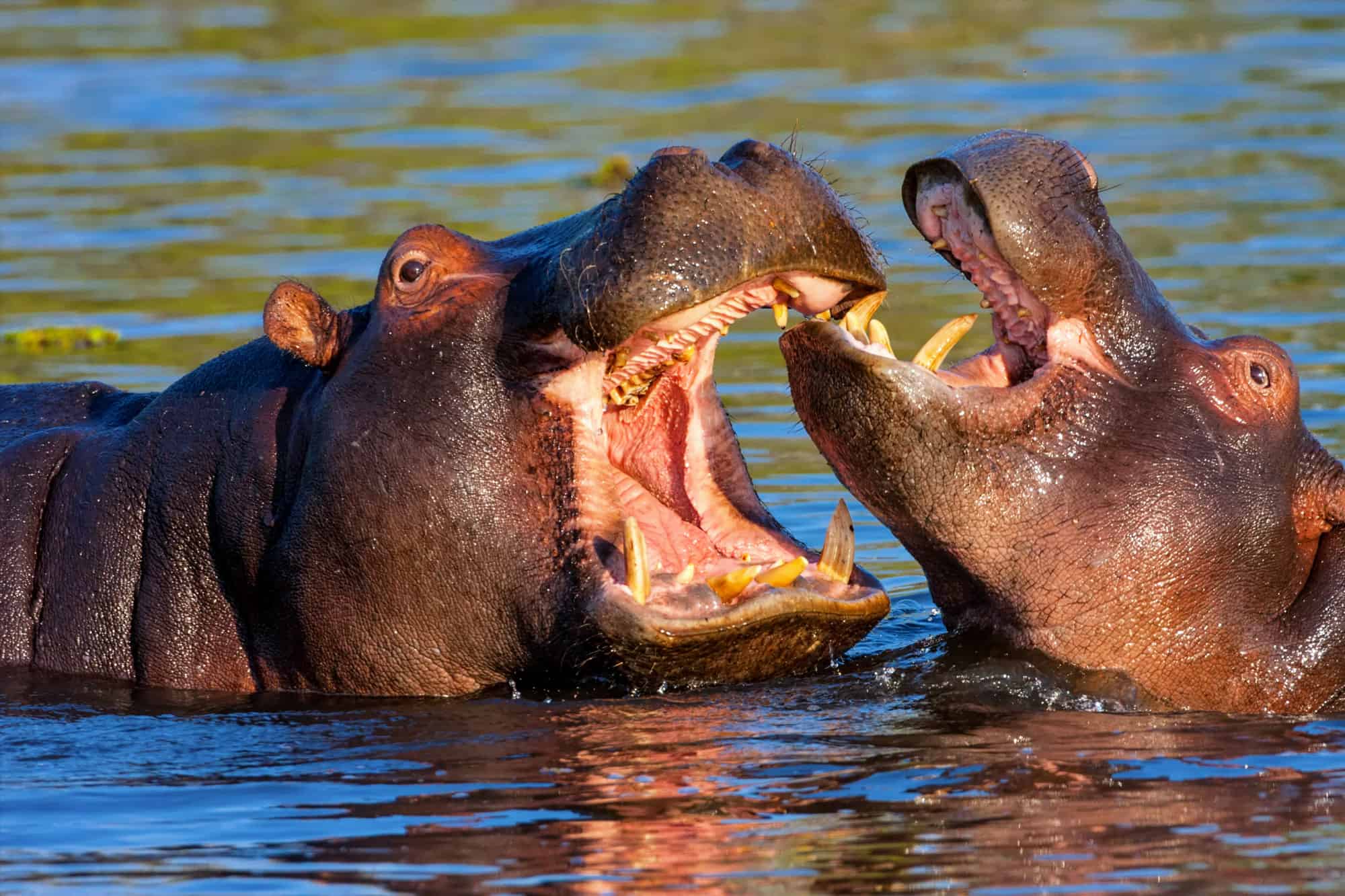
Hippopotamuses are primarily herbivores.
©iStock.com/mesut zengin
Hippopotamuses (Hippopotamus amphibus) are primarily herbivores. For the past few years, many carnivorous and cannibalistic behaviors in hippos have been documented. Surprisingly, these vegetarian animals sometimes opt for the most gruesome food choice in times of drought and food scarcity. The African Journal of Ecology described a rare incident of a hippo eating one of its own in the Shire River, Malawi.
2. Crab Spiders

The crab spider offspring eats its mother alive, while the mother doesn’t attempt to escape.
©HWall/Shutterstock.com
Crab spiders (Thomisidae) exhibit a different form of cannibalism. The crab spider offspring eats its mother alive, while the mother doesn’t attempt to escape. This behavior is commonly known as matriphagy and typically occurs within the first few weeks of the hatchlings. Apart from arachnids, this behavior has been documented in some species of insects and caecilian amphibians.
3. Sand Tiger Sharks
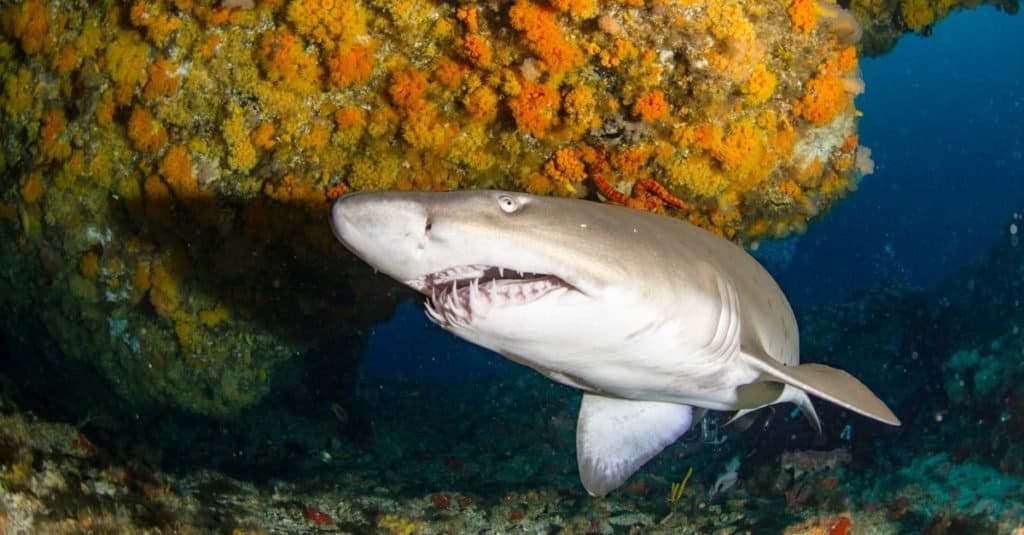
Sand
tiger
sharks exhibit intrauterine cannibalism, also known as embryophagy.
©Stefan Pircher/Shutterstock.com
Sand tiger sharks (Carcharias taurus) are a species of sharks that inhabit subtropical and temperate waters globally. In their situation, cannibalism occurs before they are born. These sharks exhibit intrauterine cannibalism, also known as embryophagy, during which the larger and stronger embryo cannibalizes unfertilized eggs (oophagy) and other younger siblings (adelphophagy) in its mother’s womb.
4. Chimpanzees
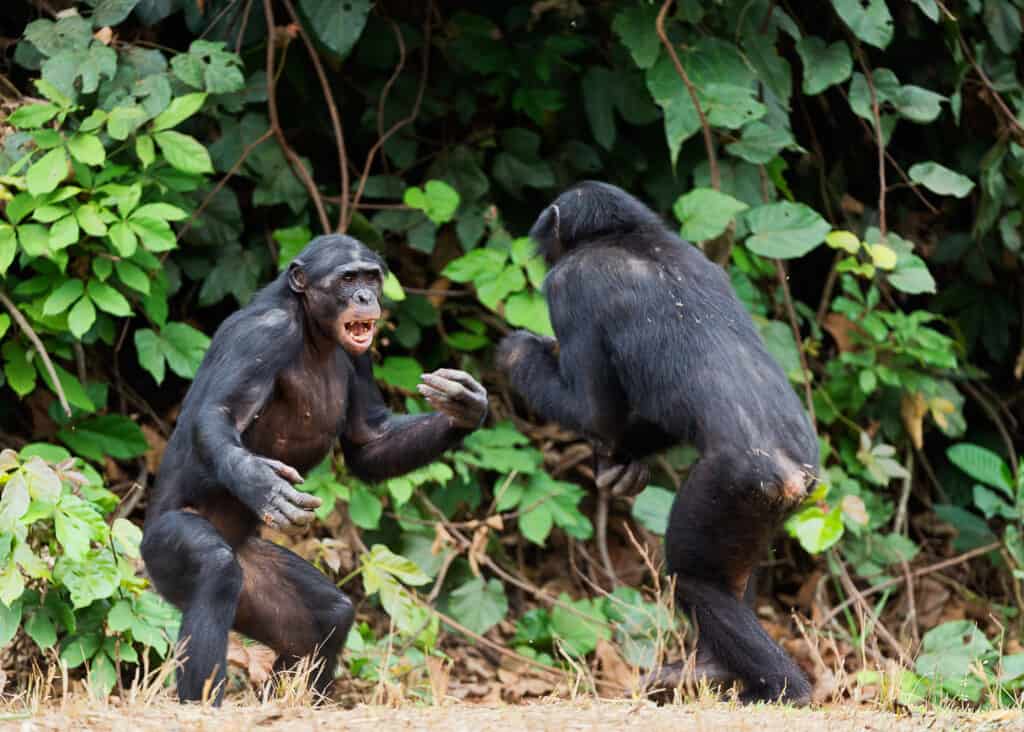
Chimpanzees indulge in the gruesome behavior of eating one of their own.
©iStock.com/USO
Although they are closely related to humans, chimpanzees (Pan troglodytes) indulge in the gruesome behavior of eating one of their own. Males typically kill and eat the infants of a particular female, usually in their own group. They eat the young for various reasons, including survival, nutrition, preventing overcrowding, and gaining dominance. Maternal cannibalism is extremely rare in chimpanzees.
5. Tiger Salamanders

Tiger salamanders are among the world’s largest terrestrial salamanders.
©Creeping Things/Shutterstock.com
Tiger salamanders (Ambystoma tigrinum) are among the world’s largest terrestrial salamanders. Young salamanders often experience intense competition and cannibalism in their natural environments, influencing their morphological traits, survival, and developmental rates. They start eating each other at around four weeks when some morph larger, flatter heads with massive teeth, about three times bigger than those of their siblings. They eat the vulnerable to reduce their population, so they don’t have problems during a food crisis.
6. Polar Bears
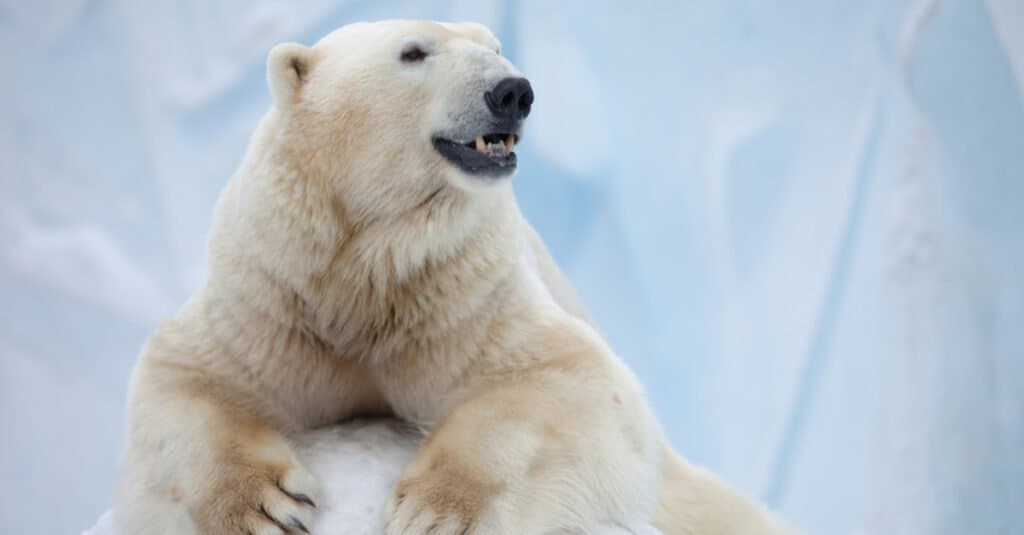
Polar bears are large carnivorous bears that live along shores in the icy cold Arctic.
©Zhiltsov Alexandr/Shutterstock.com
Polar bears (Ursus maritimus) are large carnivorous bears that live along shores in the icy cold Arctic. They typically eat seals which they hunt from the platform of sea ice. However, climate change has made it more strenuous for polar bears to hunt seals at sea. As a result, they have taken the desperate measure of eating each other for survival.
7. Mormon Crickets

Mormon crickets are large insects commonly found in rangelands dominated by forbs and sagebrush.
©iStock.com/Triggermouse
Mormon crickets are large insects commonly found in rangelands dominated by forbs and sagebrush. These creatures exhibit competitive cannibalism due to limited food resources often caused by increased population density. They usually go on a forced march in a group whenever they have a protein or salt shortage in their diet. The crickets that move slower or are injured are usually at a higher risk of cannibalization.
8. Hamsters
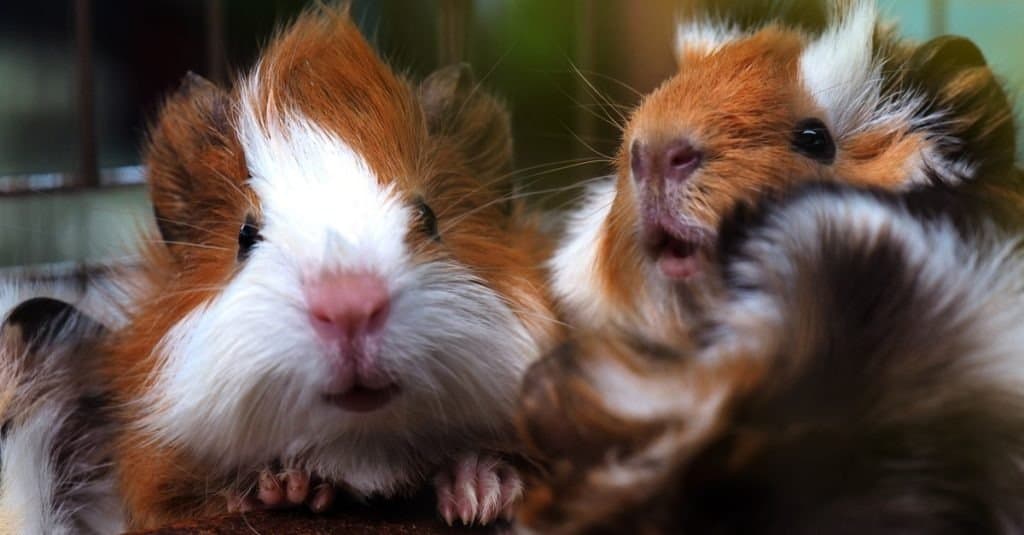
Hamsters are small-sized rodents belonging to the subfamily
Cricetinae.
©Vee Tanaphot/Shutterstock.com
Hamsters are small-sized rodents belonging to the subfamily Cricetinae. The golden or Syrian hamster is one of the best-known species since it is often kept as a pet. These cute little creatures are also capable of cannibalism. Female hamsters, in captivity and in the wild, are sometimes known to eat their newborn babies. It’s thought that a restricted diet consisting of corn only and having a mineral and vitamin deficiency can cause cannibalism in hamsters.
Hamsters have also been observed eating one another for territory reasons. Some hamsters are territorial and get irritated when confined with another hamster in the same cage, and this usually happens only among males.
9. Praying Mantises

The praying mantis exhibits cannibalistic behaviors, especially during mating.
©Karel Bartik/Shutterstock.com
The praying mantis (Mantis religiosa) exhibits cannibalistic behaviors, especially during mating. Female praying mantises often eat the males immediately after mating. Females usually face a trade-off between mating and consuming a courting male. First, she bites off the male’s head, then proceeds to eat the rest of the body. This practice is commonly known as sexual cannibalism and is common among many other insects and arachnids.
10. Black Widow Spiders
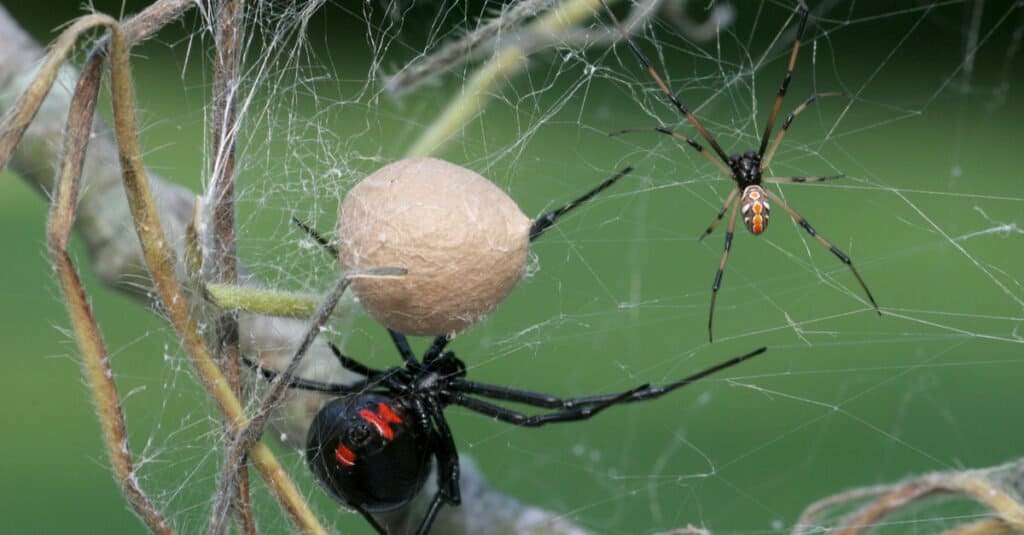
Black widow spiders exhibit both sexual and sibling cannibalism.
©Mark_Kostich/Shutterstock.com
The black widow spider (Latrodectus) exhibits both sexual and sibling cannibalism. The journal of Animal Behavior shows that when black widow spiderlings hatch in asymmetrically sized pairs, the largest is likely to consume the smaller. However, when they are all hatched at about the same size, they hardly engage in sibling cannibalism.
Female black widow spiders eat males moments after mating, sometimes mid-copulation. They feed on them as a source of nutrients for egg fertilization. While most males try to escape, others accept their fate or are willing participants.
Summary of 10 Animals That Are Cannibals
| Animal | Reason for Cannibalism |
|---|---|
| Hippopotamus | Food scarcity |
| Crab Spider | Matriphagy |
| Sand Tiger Shark | Embryophagy |
| Chimpanzee | Preventing overcrowding, gaining dominance |
| Tiger Salamand | Reduce population of vulnerable |
| Polar Bear | Climate-stressed survival |
| Mormon Cricket | Competition for protein and salt |
| Hamster | Territory competition |
| Praying Mantis | Sexual – female eats male at copulation |
| Black Widow Spider | Larger eat smaller in asymmetrical sibling pair; sexual when female eats male for nutrients for egg fertilization. |
The photo featured at the top of this post is © iStock.com/Alexey_Seafarer
Sources
- Springer Link, Available here: https://link.springer.com/article/10.1007/s10164-007-0050-3
- Science Direct, Available here: https://www.sciencedirect.com/science/article/abs/pii/S0003347216301439.
- Discover Wildlife, Available here: https://www.discoverwildlife.com/news/climate-change-lifespan-species/
- PNAS, Available here: https://www.pnas.org/doi/abs/10.1073/pnas.0508915103
Thank you for reading! Have some feedback for us? Contact the AZ Animals editorial team.







